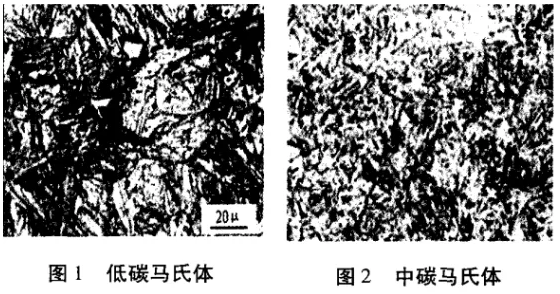In production, sometimes there will be insufficient hardness after quenching, which is a common defect in the process of heat treatment quenching. “Insufficient hardness” has two kinds of performance, one kind of performance is the whole workpiece hardness value is low, the other kind of performance is the local hardness is not enough or soft point. When the phenomenon of insufficient hardness, to use hardness test or metallographic analysis and other methods to analyze what kind of “insufficient hardness”, and then from the raw materials, heating process, cooling medium, cooling method and tempering temperature and other aspects to find reasons, so as to find solutions.
1. Improper selection of raw materials or wrong materials
Should be made of medium or high carbon steel parts and the wrong use of low carbon steel, should be made of alloy tool steel parts and the wrong use of ordinary high carbon steel will cause insufficient hardness or soft spots. Example 1: the gear should be made of 45 steel and its hardening hardness should be about 60HRC, while 25 steel was wrongly chosen and the result was about 380HBS.
Example 2: The mold made by 9Mn2V should be used, but T8 steel is used by mistake. Because the spark of 9Mn2V and T8 steel is difficult to distinguish, the quenching process of 9Mn2V is mistakenly quenching, and oil cooling is used. The hardness is only about 50HRC.

The above two cases belong to the overall hardness is insufficient, can use hardness test or metallographic test (25 steel quenching to obtain low carbon martensite, as shown in Figure 1, 45 steel quenching to obtain medium carbon martensite, as shown in Figure 2) to determine.
Solutions:
1) Appropriate materials should be selected during design;
2) Strengthen material management. Chemical analysis should be carried out before materials are put into storage, and then classification and marking can effectively avoid sending wrong materials;
3) The heat treatment operator shall conduct spark analysis before operation to roughly identify whether the parts meet the requirements of the drawings;
4) When the workpiece section is large or the thickness of the workpiece section is different, if the tool steel is used, due to its poor hardenability, the internal hardness of the large section will be low. At this time, alloy steel with good hardenability should be used.
2 Uneven microstructure of raw materials results in insufficient local hardness or soft spots
One of the following microstructure: carbide segregation or aggregation phenomenon, such as ferrite aggregation, the emergence of graphite, severe weistenite structure will appear insufficient hardness or soft point.
If you have any questions,pls feel free to contact us.
e-mail:bearing6@hyzcgroup.com
- YRT rotary table bearing
- YRTS rotary table bearing (high speed series)
- YRTM with integral angular measuring system series
- ZKLDF axial angular contact ball bearing series
- RA series crossed roller bearing
- SX series crossed roller bearing
- CRBH series crossed roller bearing
- RE series crossed roller bearing
- RU series crossed roller bearing
- RB series crossed roller bearing
- XR/JXR series crossed taper roller bearing
- Crossed roller bearing

✉️ bearing20@hyzcgroup.com
📞 +86 15236685001





